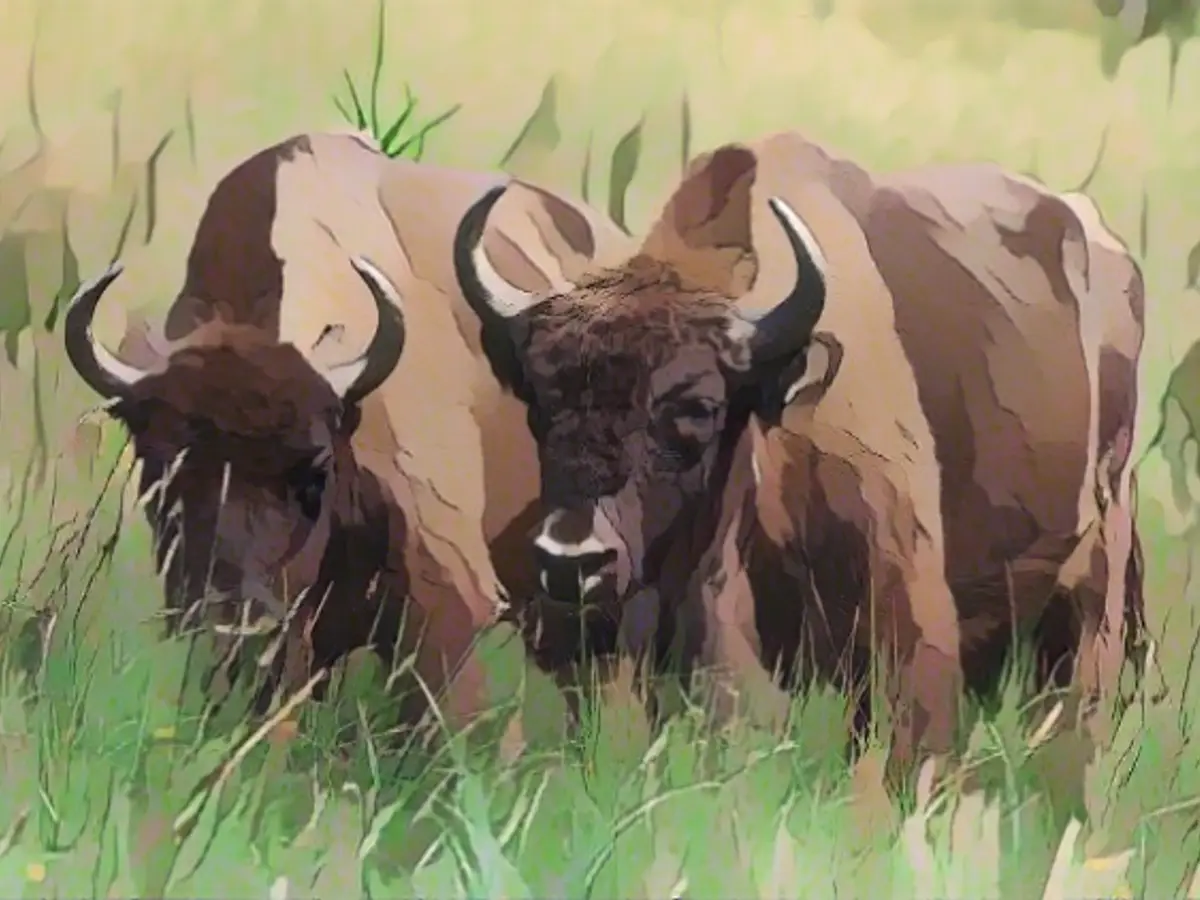The difficult existence of bison in Europe
Bison have lived on earth for thousands of years. But the frugal and calm wild cattle are threatened with extinction in Europe. An international team of researchers is finding out how this could have happened and where the animals could live again in the wild.
Tens of thousands of years ago, bison roamed large parts of Europe - the European bison(Bos bonasus) was even common south of the Alps. But by 1927, the species was extinct in the wild, with around 60 animals still living in captivity. An international team of researchers has now investigated how these colossi, weighing up to a ton, disappeared. In the journal "Proceedings of the Royal Society B ", the group draws conclusions from the analysis as to where in Europe a reintroduction of bison would be most promising.
First, the group led by July Pilowsky from the Universities of Copenhagen and Adelaide reconstructed the causes for the disappearance of the animals over a period of 21,000 years. To this end, fossil remains were combined with tens of thousands of computer simulations that simulated various climatic and environmental conditions as well as human influences.
According to the results, the animals' habitat shrank from around 14,700 years ago as the climate warmed. As a result, the populations retreated to a core area in central, eastern and south-eastern Europe. Later, hunting by humans initially affected the populations in the north and east, while in the west and south it was primarily a change in land use, as the team reports. From the 15th century onwards, the introduction of firearms accelerated the decline of the bison.
History is repeating itself
"The history of the past is repeating itself in the present," says co-author Rafał Kowalczyk from the Polish Academy of Sciences. Even today, climatic changes, poaching and increased land use are threatening the bison. Following ambitious reintroduction programs, there are currently 7300 animals living in the wild again in Europe - in habitats as diverse as the Netherlands and the French Alps. The only free-living herd in Germany, with around 40 animals, lives in the Rothaargebirge in North Rhine-Westphalia.
According to the research team, only 8 of the 47 wild bison populations comprise more than 150 adult individuals - these herds are partially fed. Most herds live without contact to other groups. According to the environmental organization WWF, the vast majority of animals live in Poland, Belarus, Russia and Ukraine.
Pilowsky's team concludes from the study that it is precisely in these regions that the reintroduction of the animals would be most promising. However, there are also suitable areas in parts of the Balkans and Germany, they say.
Controversial "ecosystem engineers"
In Germany, however, the 40 or so animals in South Westphalia are already causing a lot of controversy. As recently as September, it was suggested at a round table discussion that their number be reduced to 20 to 25. The background to this was complaints from forest farmers that bison were causing damage to trees.
In fact, it is precisely this characteristic that is cited in the study as an advantage of the "ecosystem engineers": "By debarking trees and grazing tree seedlings, the European bison restores threatened grassland habitats and prevents the encroachment of forests."
Read also:
- This will change in December
- German activists speak out in Dubai on suffering in Israel and the Gaza Strip
- Despite UN vote: fighting between Israel and Hamas in the Gaza Strip continues
- Nuclear fusion - hype or solution to energy problems?
- To address the impact of climate change on wildlife, European education programs should incorporate the story of the bison's recovery and protection as a case study.
- The European Union could funds projects aimed at species protection, focusing on habitats in Poland, Belarus, Russia, Ukraine, and certain areas in the Balkans and Germany, following the recommendations of the recent study on bison reintroduction.
- The importance of bison in maintaining forest ecology and restoring threatened grassland habitats should be emphasized in environmental education, particularly in light of their role as 'ecosystem engineers'.
Source: www.ntv.de







